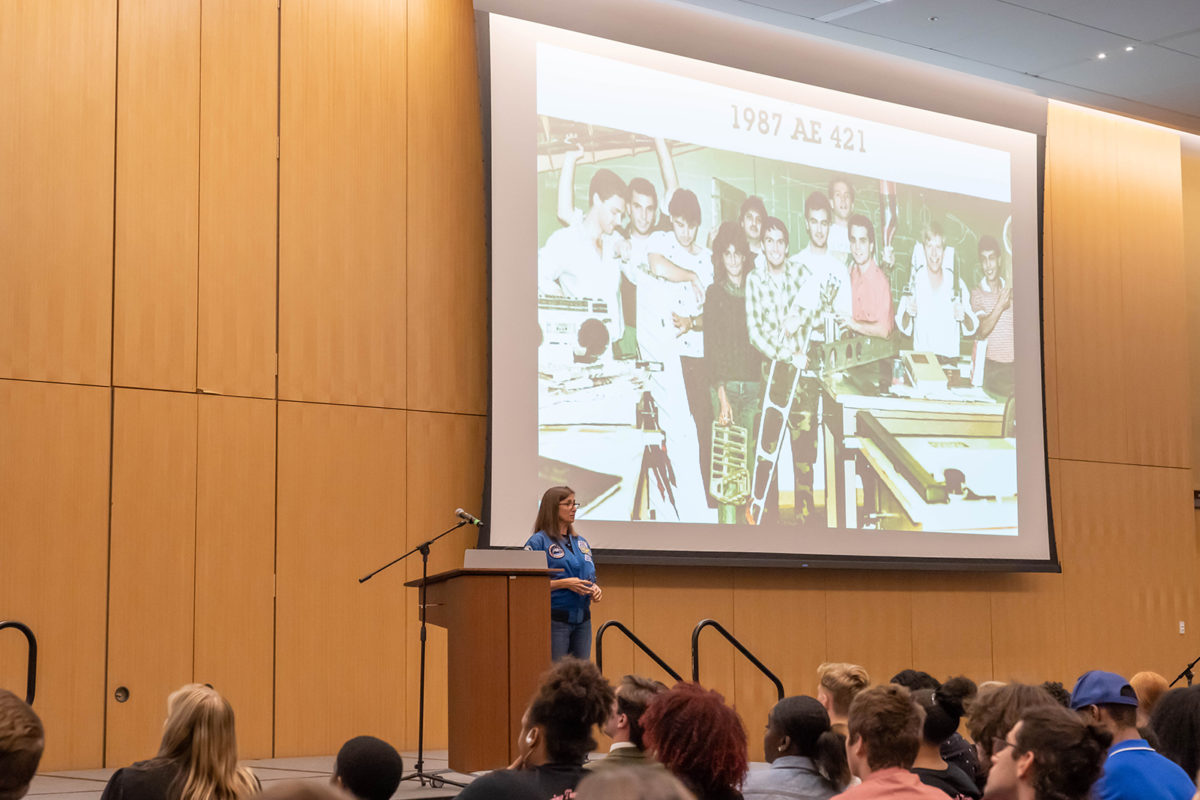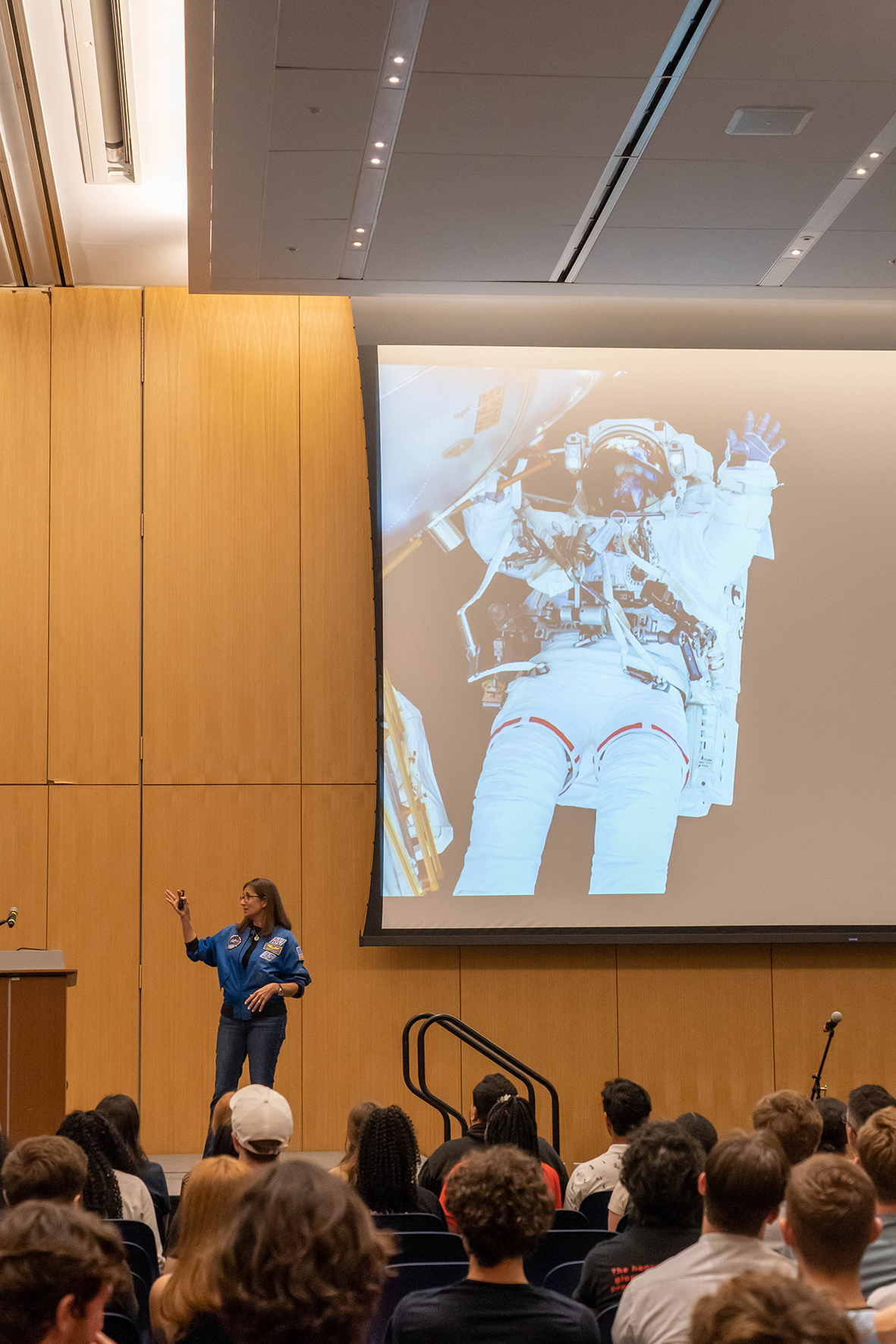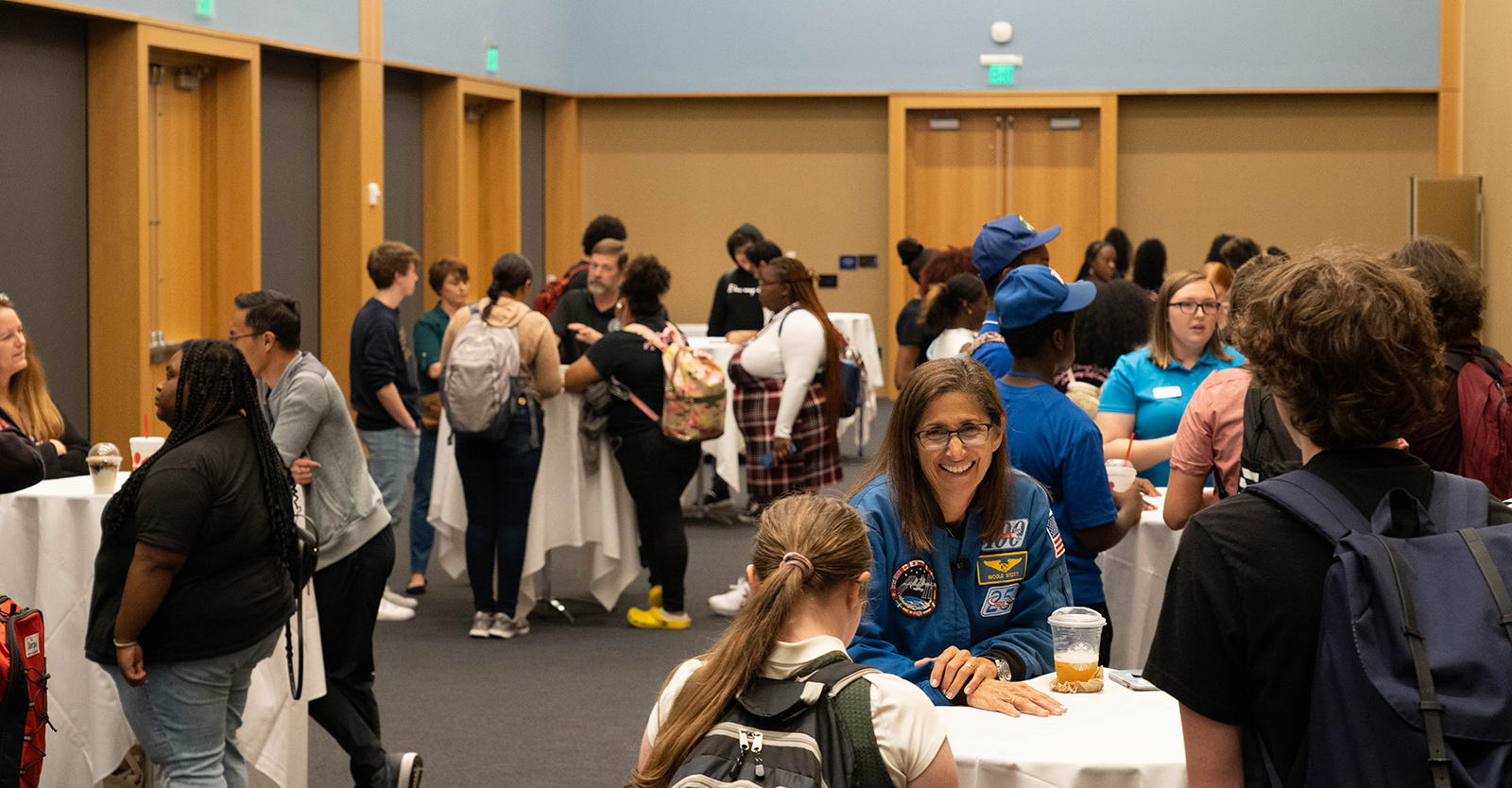When Nicole Stott first interviewed to be an astronaut in 1998, she didn’t get the job. Instead, she was offered a different job.
Stott (’87) already worked at NASA as an engineer at Kennedy Space Center, but the new job would be as a flight test engineer at Johnson Space Center working on the Shuttle Training Aircraft, a modified Gulfstream where pilots trained to land the Space Shuttle.
She accepted that job, loved it and applied to be an astronaut again for the 2000 class. On July 20, 2000, the anniversary of the first moon landing, she was making her instrument rating check ride. At the airport, she got a call. She was going to be an astronaut.
Stott, who majored in Aeronautical Engineering, went on to travel to space twice, one three-month mission on the International Space Station and a two-week trip on the ISS via Discovery’s final flight.
“Going to space was awesome,” Stott told an audience at Embry-Riddle. “I loved every minute of it, the training leading up to it – I love thinking about it now. I love looking forward to seeing some of you do that same thing.”
Stott retired from NASA in 2015, but now more than ever she’s an advocate for space exploration and the next generation setting their sights high. Stott visited the Daytona Beach Campus Feb. 1 to present an Astronaut Scholarship to Jarred Jordan, a senior majoring in Aerospace Engineering. He is the second student at Embry-Riddle to receive the award following Grace Robertson (’22), who is now an engineer at Sierra Space.

Stott was struck by Jordan’s essay focusing on the idea of bringing what could be perceived as science fiction into the realm of scientific fact. Jordan is a member of the Space Technologies Lab, which created EagleCam, a CubeSat that will take the first third-person images of a spacecraft landing on the moon.
She liked his reflection on “these things that we thought or may still think are impossible but really going for it to bring it to life,” Stott says. “And that’s what I love that happens here at Embry-Riddle.”
After presenting Jordan’s award, Stott spoke to an audience of high school and Embry-Riddle students, ready to answer any question.
How bright is the Sun from space? It’s really bright.
What’s the path to become an astronaut? There are many paths, and with commercial space flight, the pool of job openings will likely grow.
She also pointed to how the field has become more inclusive. The last time NASA sent people to the moon, there were no women in the main room of Mission Control, she says. There were also no women among the Apollo astronauts.
Now women lead Launch Control in Florida and Mission Control in Houston. Of the active NASA astronauts, Stott estimates that 40 percent are women.
“It’s encouraging to me to look out at the audience tonight and see the people we have here,” she says. “I think we all need to remember whether it’s an airplane or a computer or rocket ship, those things don’t care if you’re a boy or girl, right? It’s just about how you work with them, how you perform with them.”
She shared a picture of herself in her senior design class in 1987 and reflected that her and her fellow students’ education at Embry-Riddle “put all of us in a position to go off and work at places like NASA and the contractors for NASA and other really cool stuff going on around the world because of the way we were taught more than just the technical side but from the overall project management side of what we were designing and building and creating.”

“I really feel like the experience I had here at Embry-Riddle was one of the pivotal things for putting me in a place – after working as a NASA engineer just down the road from here on the Space Shuttle and Space Station program – that I was in a position to even just consider the thought of maybe this whole astronaut thing could be possible.”
She’s grateful to her mentors at Kennedy Space Center who encouraged her to apply to be an astronaut.
“I would have doubted myself right out of doing that, so I encourage you: Do not doubt yourself. If somebody’s going to tell you ‘No,’ don’t let it be yourself.”
Stott is an advocate for international cooperation and co-founder of the Space for Art Foundation, uniting children through art and the wonder of space exploration. In her time on the ISS, she painted a watercolor that went on display in the National Air and Space Museum.
Living on the ISS with people from all over the world suspended in space taught her valuable lessons about the necessity of being able to work with fellow crewmates.

“We live on a planet,” she tells everyone. “We are all Earthlings, and the only border that matters is that thin blue line of atmosphere that blankets and protects us all. And I absolutely know through the experience I had in space that if we choose to behave like crewmates and not passengers, we absolutely have the power to create a future for all life on Earth that’s as beautiful as it looks from space.”
Stott shared photos of the nine Embry-Riddle graduates who have been to space from Susan Kilrain (’82), selected as a NASA astronaut in 1994, to Alvin Drew (’95), who flew on the International Space Station with Stott, to Jared Isaacman (’11), who is scheduled to return to space on the SpaceX Polaris Dawn mission this year.
When Stott was training to go to space, she encountered other Embry-Riddle alumni along the way. Alumni taught her to use a robotic arm and helped load her onto the Space Shuttle.
“Eagles are everywhere,” she says. “And that’s just going to continue to grow.”
